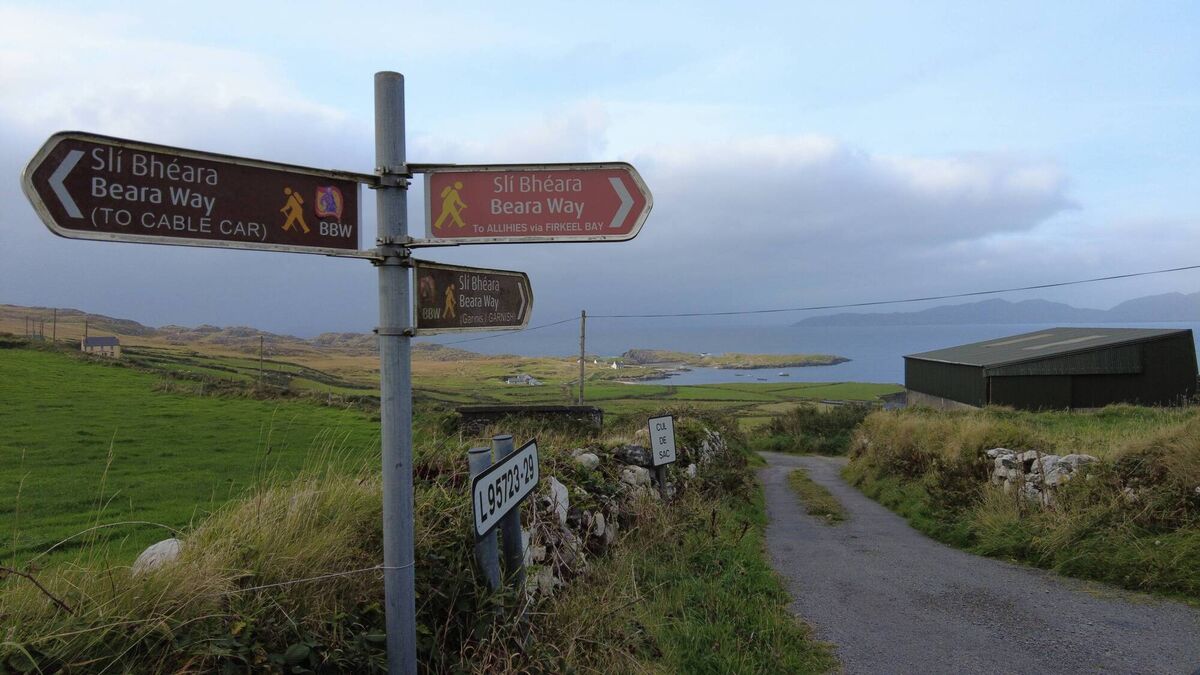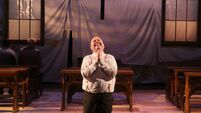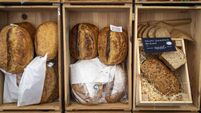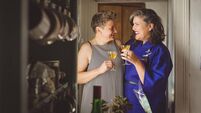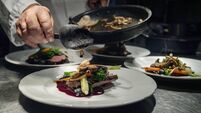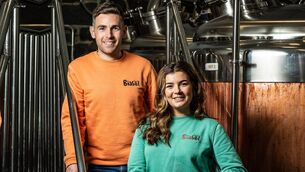Wild West Coast: Breton film-maker's lifelong love for Ireland
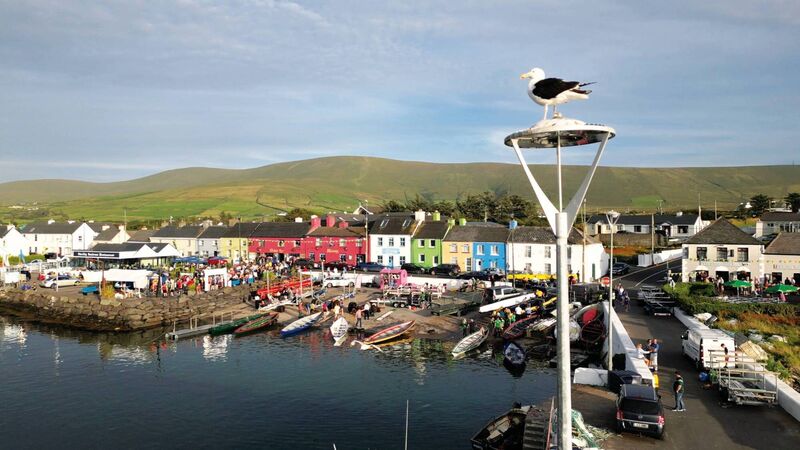
A view of Portmagee, Co Kerry, taken by Breton documentary film-maker Jean-Luc Diquelou.
first visited Ireland in 1979. The Breton documentary film-maker has regularly returned to the West Coast in the years since then
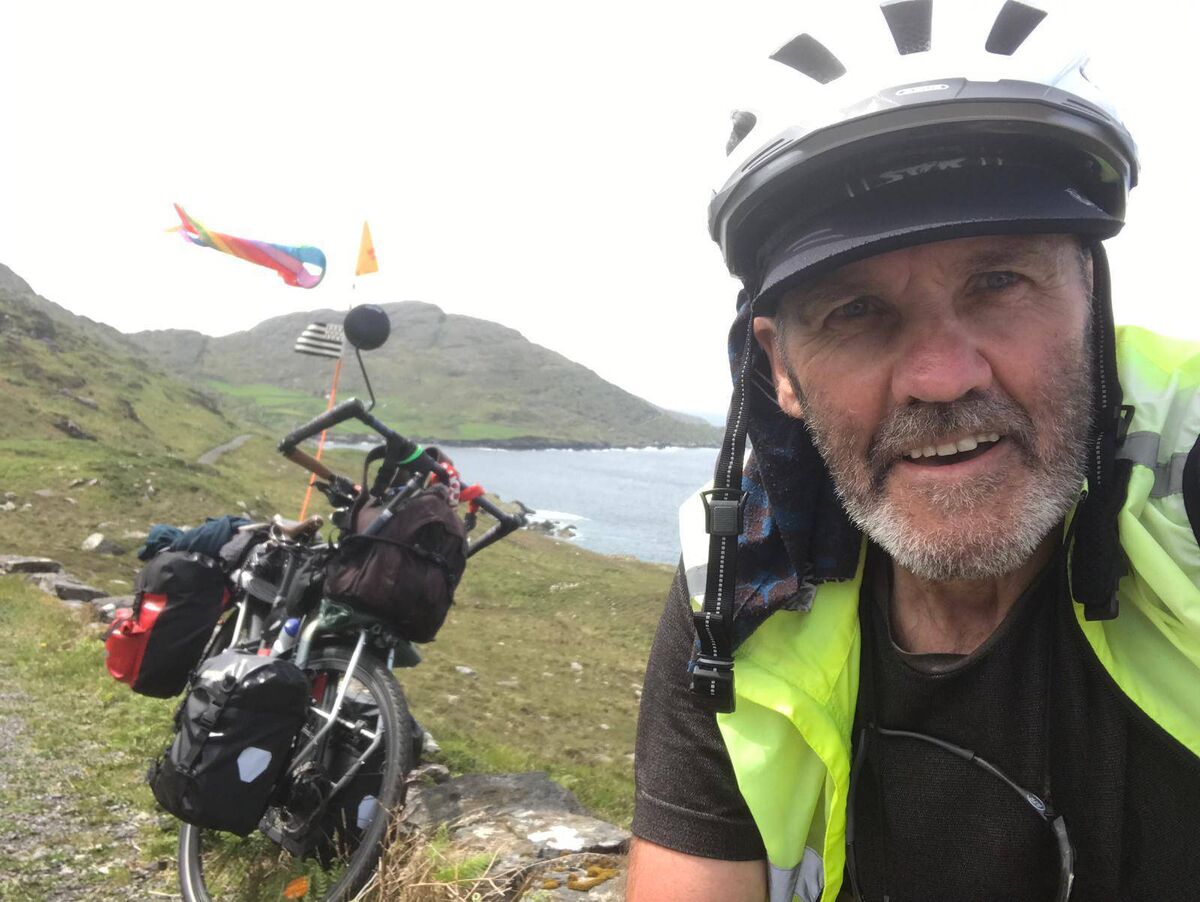
What is it about Ireland that has kept me visiting its west coast at regular intervals for more than four decades now?
When I add up all my visits, I realise that I’ve spent almost three years of my life touring Ireland’s west coast. My first time was in 1979. I was on a bike, laden with luggage, leaving Brittany for a tour of Europe that would last three and a half years, without a single return visit home.
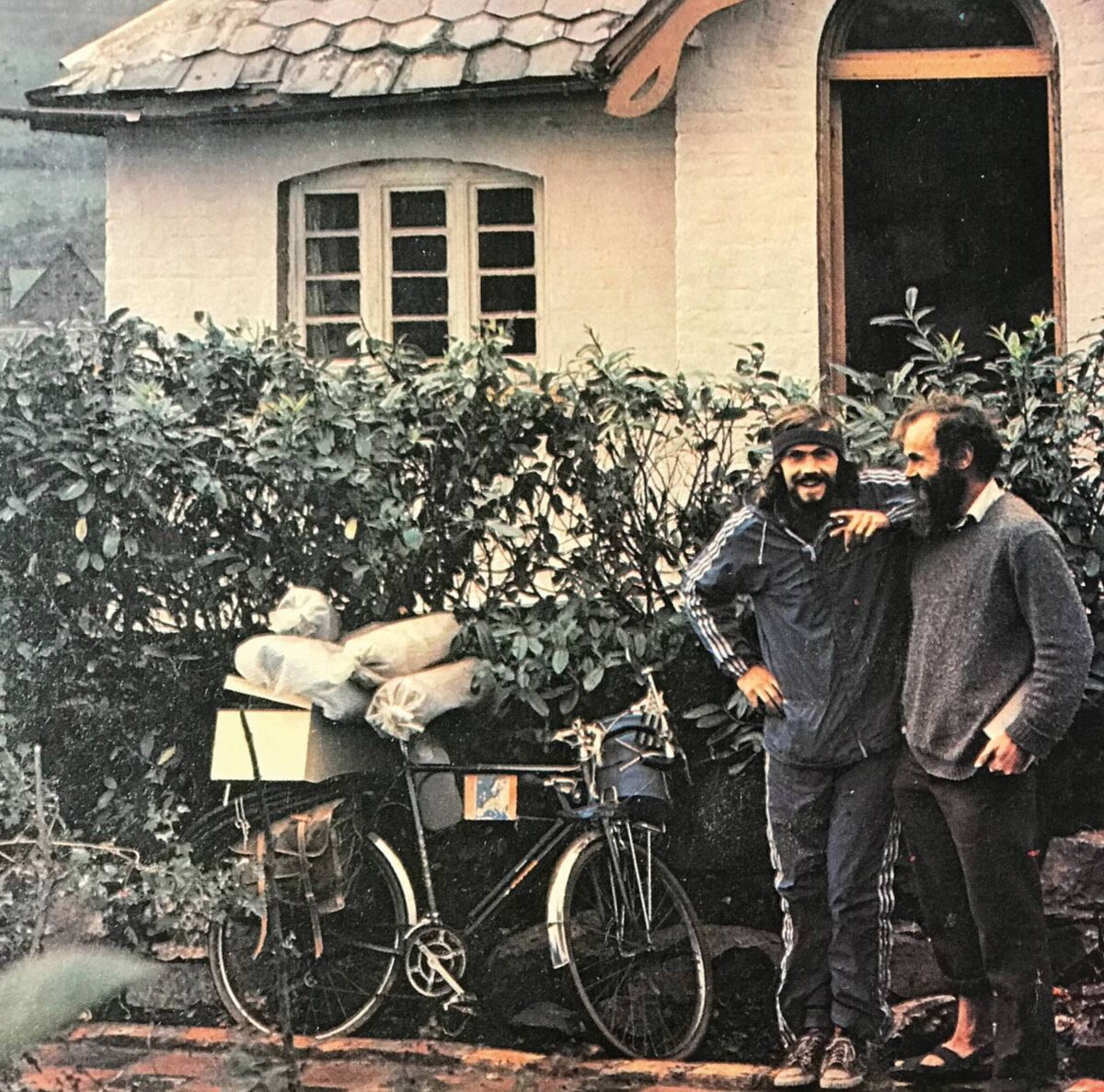
After travelling all around for two months, sharing great times with great people, it was inevitable that I’d return in 1980. This time around, Guinness Brewery agreed to sponsor my cycling tour of Europe. A biking ambassador of the world’s most famous stout. Hard work indeed!
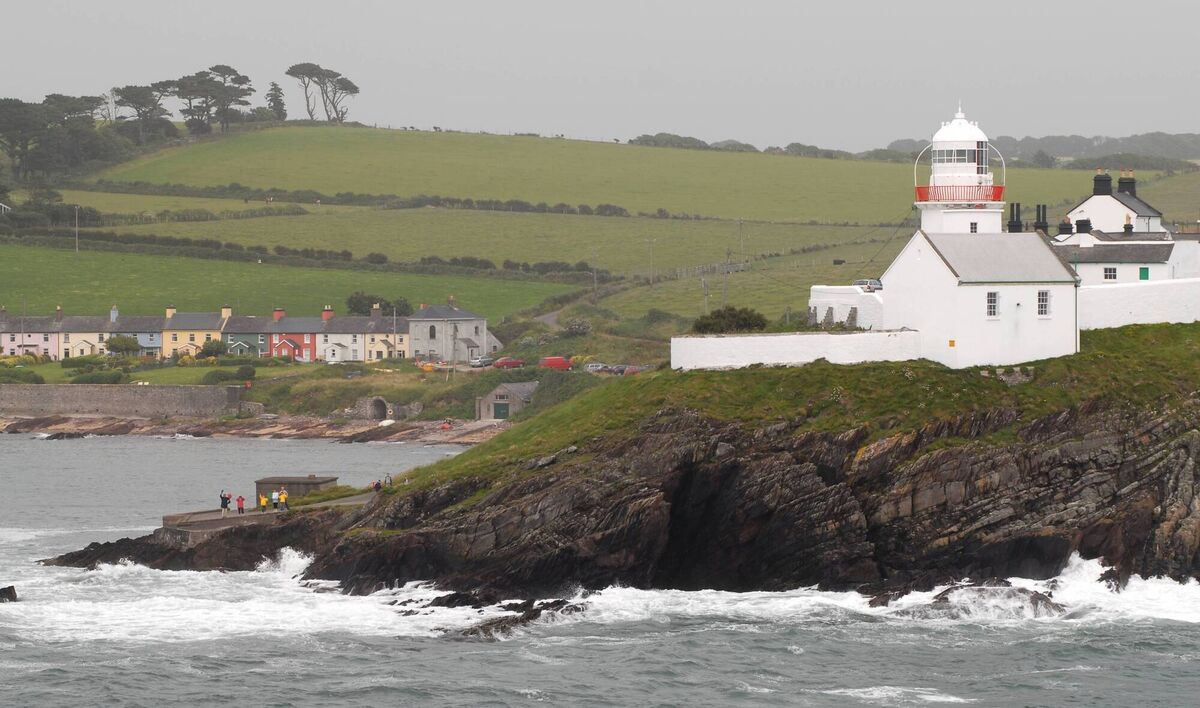
By the time I returned to Ireland ten years later, having clocked up thousands of new encounters, I had since become a travel documentary film-maker. After two films made in Wales (1985) and Scotland (1987), Ireland would complete the trilogy of neighbouring Celtic countries.
Madly passionate about this Ireland, I made two other films in 1996 and 2007, both telling the story of this country, the lives of the people, my encounters, my travel moods, the atmosphere of the pubs and the hurling and Gaelic football matches.
I even had the pleasure of playing Gaelic football in Tipperary at a training match in Bansha where John Moloney, an international referee of the sport, was then coach of the club. I even scored a memorable goal, which stunned everyone! As it turned out, I had not grasped which team I was playing with and I’d scored an own goal.
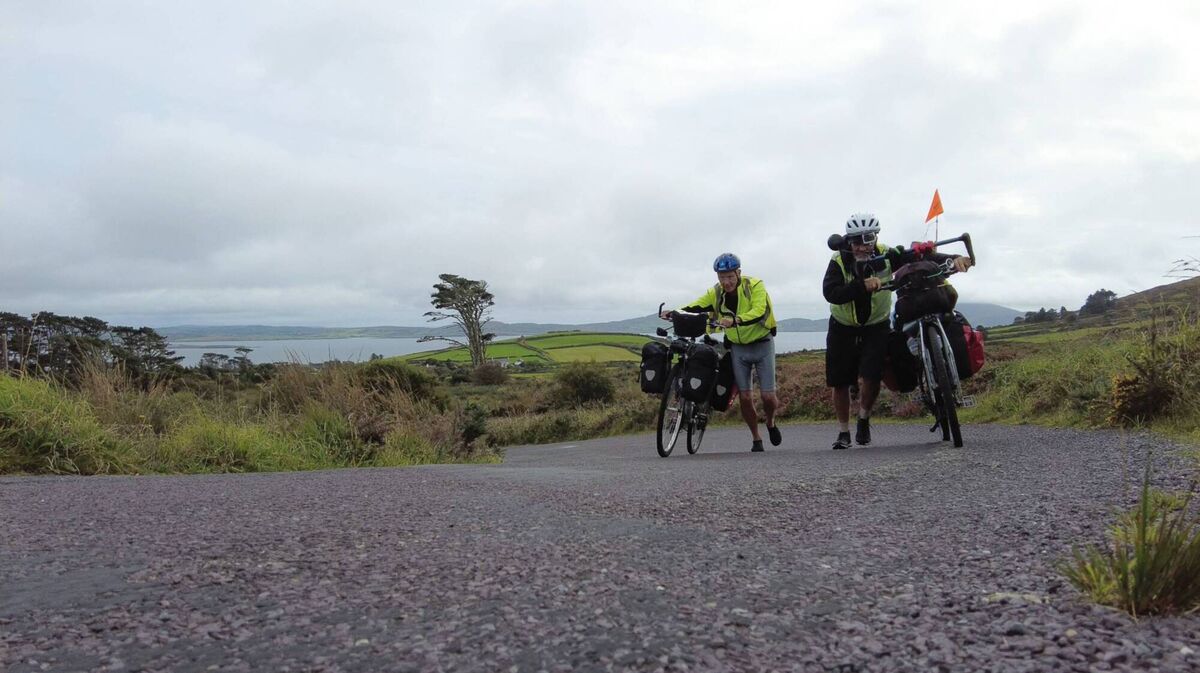
Over the years, I have presented my films in colleges and cultural venues in France, Belgium, Switzerland and Quebec. In total, I will have presented these three Irish films more than 4,000 times in front of a collective audience of around 500,000 spectators.
Switching to 2023. It's been over 15 years since I've been to Ireland. The decision is made to make a fourth film. This time, it will be a shoot only on the west coast and on bikes equipped with luggage, but without electricity. A three-week adventure trip in September that should take us to Connemara; a second trip is planned for the following year.
My friend Bernard will accompany me. We have never travelled together, but we have known each other for a long time. Bernard is an economics teacher and rides his bike every day in Rennes, in Brittany. Bernard has also produced numerous travel documentaries in Asia and Latin America. Bernard is also a musician, with a passion for Andean music.
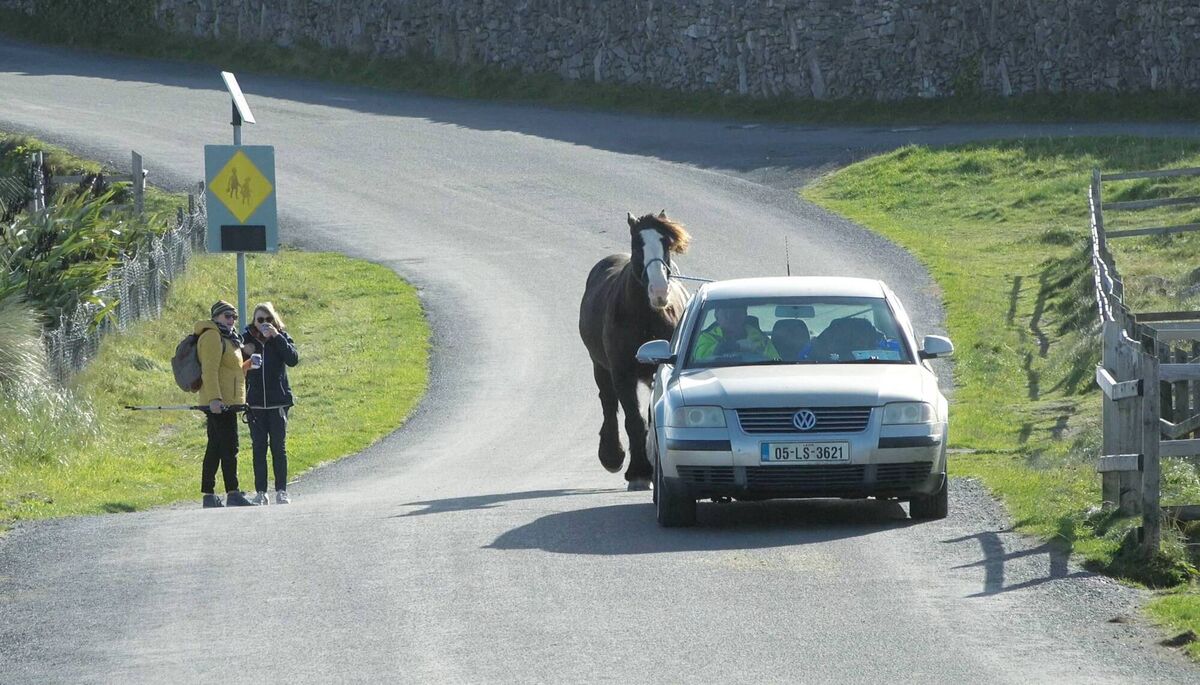
And so we’re off. Arriving in Cork by ferry, we head due south towards Kinsale. Despite being in good physical condition, the long hills often force us to push the non-electric bikes. Stil, the superb landscapes soften the blow. In the evening, we look for pubs to watch the rugby matches on TV. There is no question of us missing the 2023 World Cup!
It is difficult to find campsites on certain parts of the coast. We sometimes have to go wild camping to avoid adding dozens of extra kilometres to our route. After ten days, Bernard is not doing well. Terrible saddle pain forces him to go to Bantry hospital. Back to Brittany!
May 2024, I am back on my bike in Bantry to continue the journey. Philippe, a biker friend, will support me by going on location scouting for the needs of the film.
The first stage takes place in Castletownbere, one of the major fishing ports in Ireland. In two days, I finish a subject for the film. In Allihies, on the mountainside, the large chimney of the old copper mine watches over the village. For locals in the Allihies, this chimney is quite iconic.
At the seaside campsite, we were woken up at 5am by cows brushing dangerously past our tents!
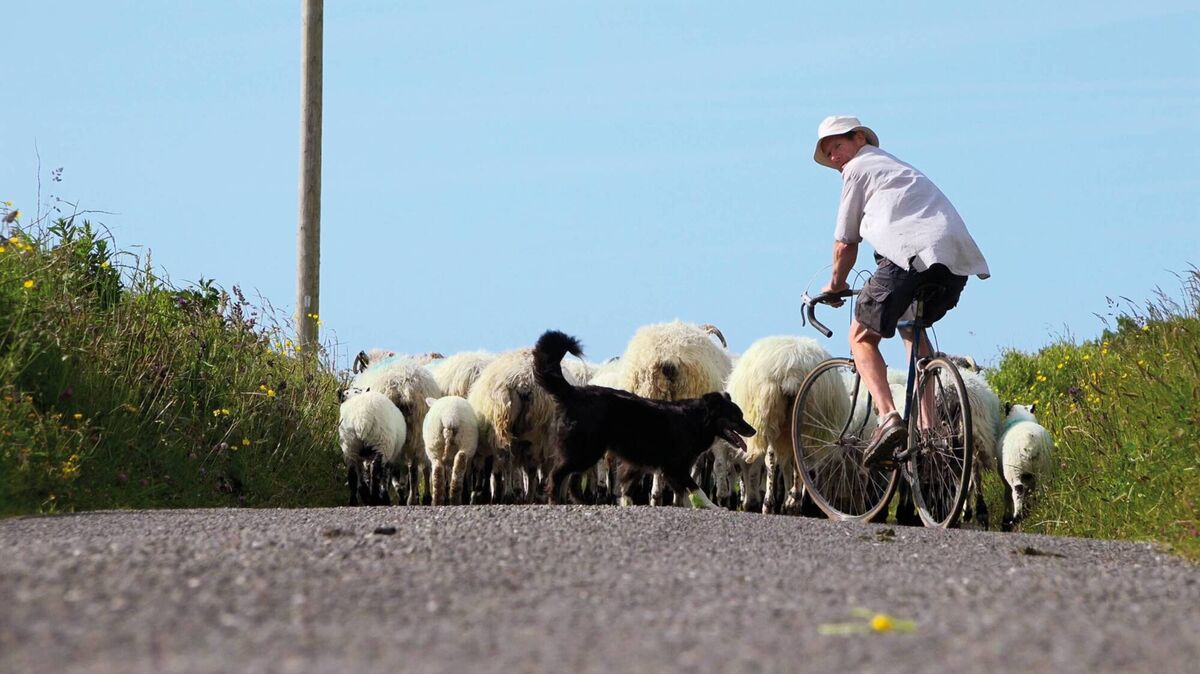
To reach Kenmare, the journey is difficult by bike, but superb. When consulting the road map, my curiosity is intrigued by the name Kenmare River; in reality, it is a huge bay, like Bantry Bay, and certainly not a river.
In fact, in the 19th century, a Lord living in the town of Westminster had managed to have "river" adopted as part of Kenmare’s name in order to impose taxes on the many locals whose livelihoods depended on the sea. Locals told me that, even today, the heirs of this Lord receive royalties from mussel producers and other sea-dependent enterprises. It is perhaps lucky that this Lord did not privatise the Atlantic!
At the Lauragh campsite, as I’m carrying too much gear, I leave a bike bag and a few things behind.
It is also in Kenmare that I meet Olivier, a delicatessen owner. Kenmare is a pretty town at the crossroads of the Beara Peninsula, Killarney and the Ring of Kerry. Olivier is originally from Tours in France. Now he sells his "homemade" products every Wednesday at the small weekly market in Kenmare. We agree to meet next week at his home near Dingle.
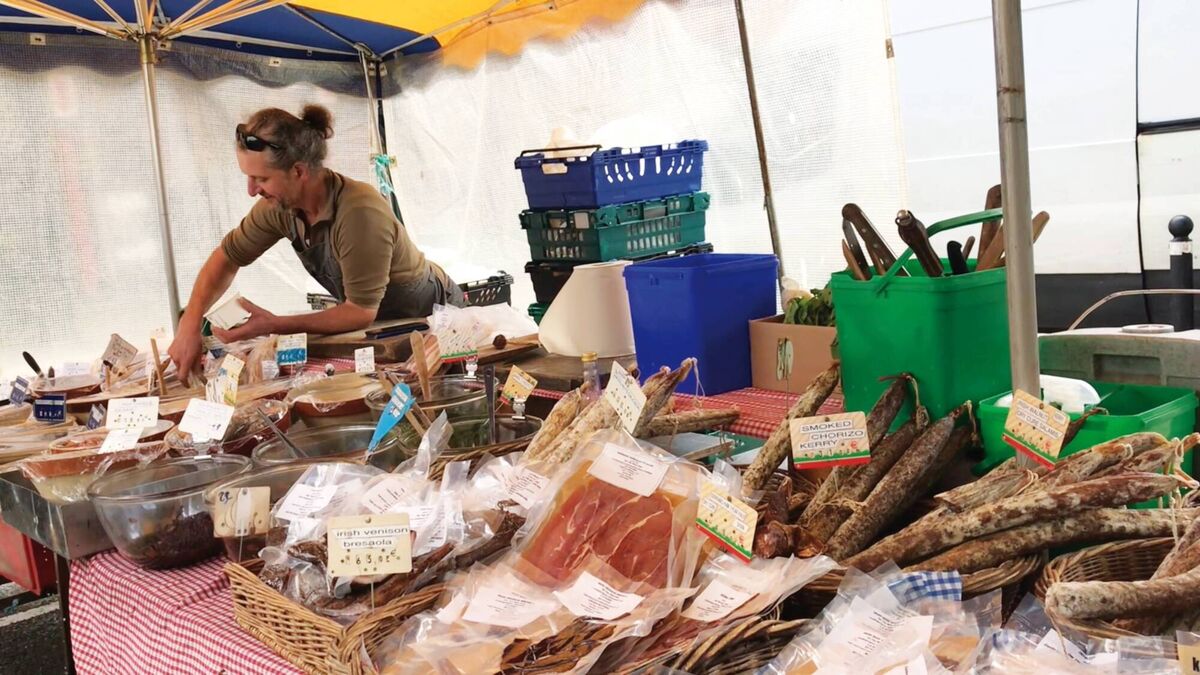
We are on the Ring of Kerry. The villages pass by: Templenoe, Sneem, Caherdaniel, Waterville, Cahersiveen. Philippe joins me each evening after exploring the surroundings. He says he really enjoys riding his motorbike in Ireland. Philippe is curious by nature, always interested in others. His encounters and his exchanges, his remarks will prove invaluable to me later.
Meanwhile, for my part, I am taking time to observe, making other contacts, filming here and there and preparing the ground for the rest of my report when I return in a few months.
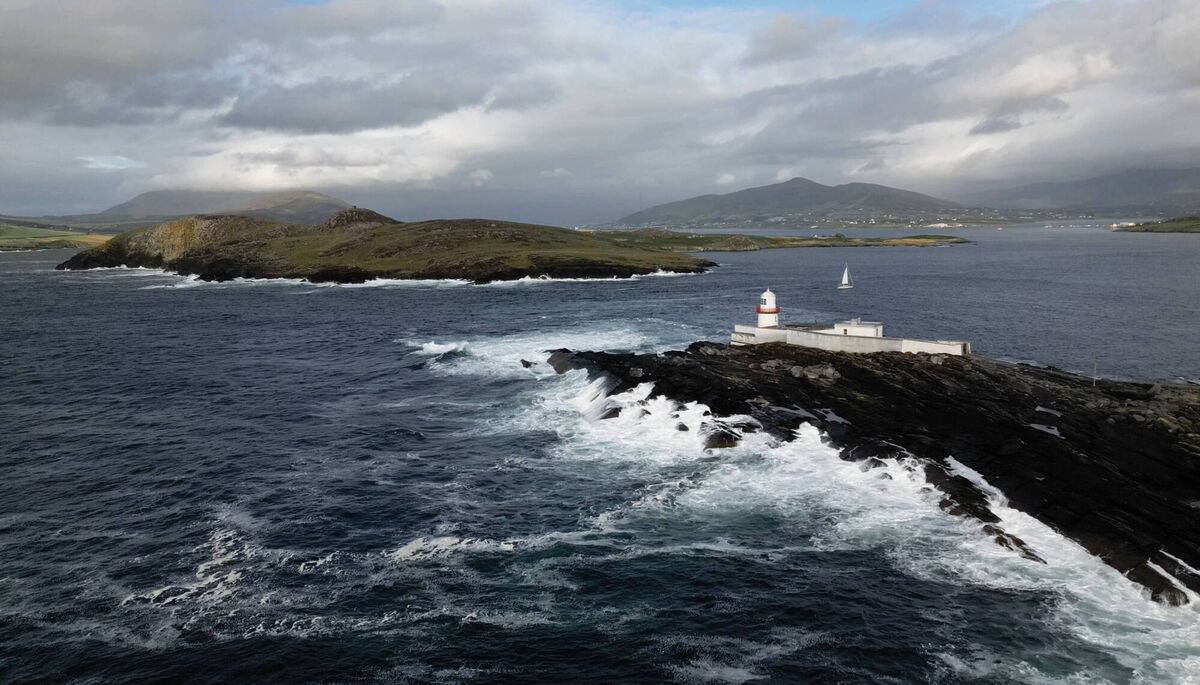
We take the ferry to Valentia Island. It immediately reminds me of an almost identical ferry in my home village where I grew up in Brittany. I really like Valentia, so I decide to stay for a week, gathering interviews and reports on the ferry, the Telegraph Cable, the lighthouse and the Knightown grocery store.
A few cables away, opposite Valentia Island, the small port of Portmagee has marked local history thanks to the development of this fishing practice that is widespread throughout the world: purse seine fishing.
The “Boat Seine” was used to capture mackerel and herring. The technique used involved surrounding the schools of fish with a large net pulled by two boats; one made up of 8 to 12 rowers and the other of four sailors. This fishing continued until the 1950s, when the mechanisation of boats in Ireland became widespread, erasing this traditional method forever.
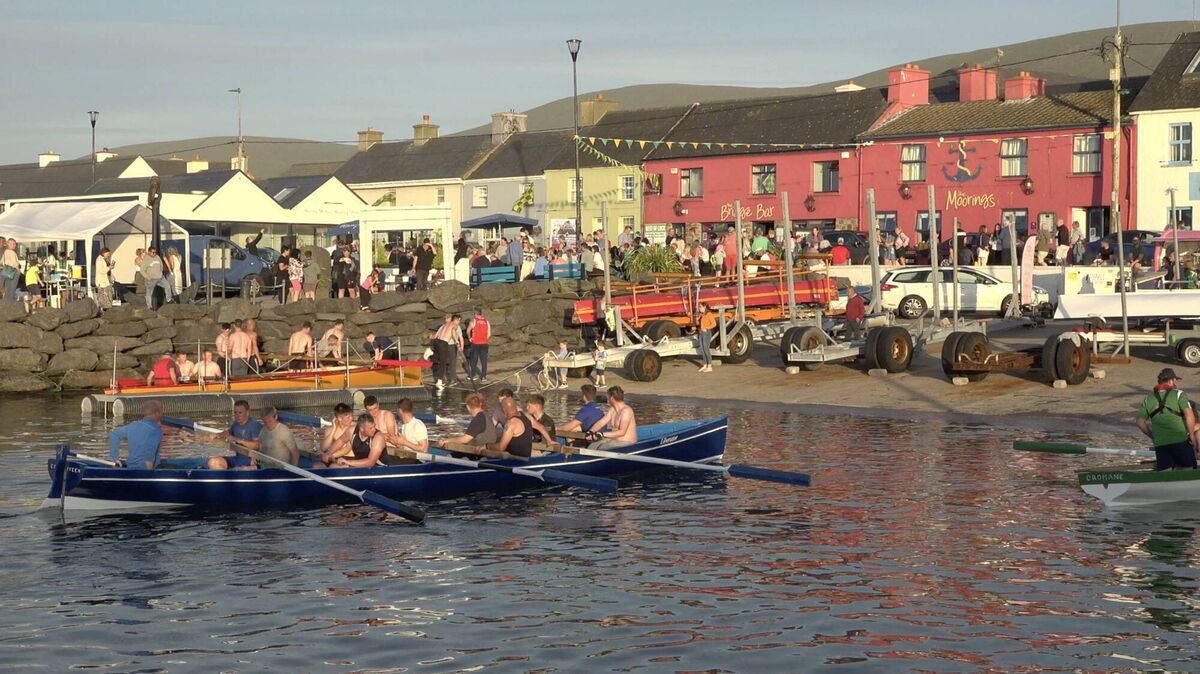
Since then, "Boat Seine" races have been organised in fine weather all over Ireland, a memorial boat for all generations. Twelve races were on the programme this afternoon, covering all categories. The last one, the strongest category, will be a final tribute to those who first practised seine fishing, which was often perilous on bad days. Tonight in the pub, no doubt some will recall some anecdotes from this bygone era.
Back on the Wild Atlantic Way, and we’re heading for Tralee via Caherciveen, Glenbeigh, Kilorglin, Castlemaine. The wind is wild and unrelenting. Then there are the endless hills. Not fun for a cyclist. I drag myself along, 84km in 10 hours.
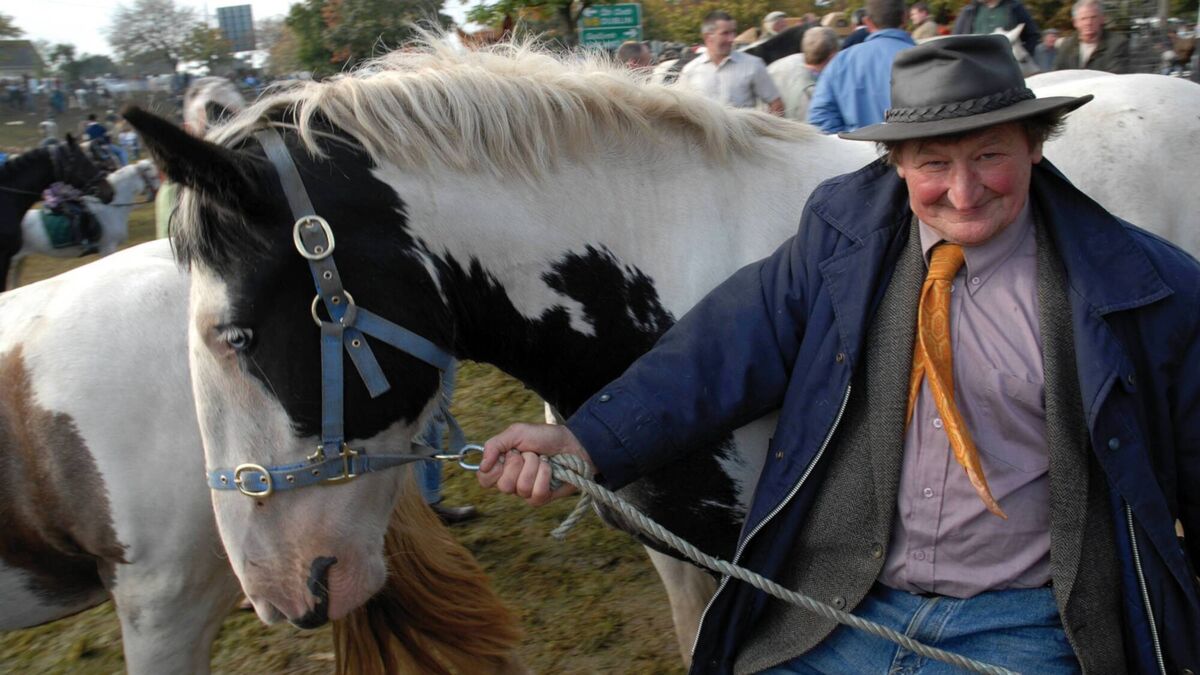
Seeing so many young people on ultra-light bikes, with almost no luggage, doesn’t help my mood any as I struggle to make headway into the wind. And then there are all these holidaymakers on electric bikes, who seem to be taunting me. I just about resist cursing at them. Jealous? Am I not 20 anymore? These gusts of wind and this last 15km hill between Castlemaine and Tralee are mentally exhausting.
Philippe will finally come by motorbike to relieve me of a few baskets before reaching the campsite in Tralee, 30km away. Finally wising up, I decide to abandon the bike report and return to France to collect my vehicle. The next day, I leave my bike at Olivier's, the delicatessen owner from Catlegregory, whom I met in Kenmare.
And so, after 700km on the Wild Atlantic Way, I take time to reflect on how all the buzz around this route has become almost mythical, making holidaymakers dream, especially foreign ones. I can only imagine that those (literally!) driving the hype have never tried cycling these routes. This road is simply deplorable for bikes, potholes everywhere, heavy traffic in places. Very often, on roads that are too narrow, a line of vehicles could not overtake me, sometimes for a kilometre.
In addition, the vegetation overflowing at least a metre on each side of the road, adds to the challenges. Not a pleasure. A real hassle, in fact! A dedicated cycle path for the safety of travelling cyclists would be a real asset. It would surely add to the tourism message.
Three weeks later, back in Ireland with my vehicle, I head straight to the Dingle Peninsula, where I spent a lot of time in the past. I remember as if it were yesterday Eddie Hutchinson and his friends taking me rowing on curraghs in Dingle Bay. Eddie made the curraghs himself.
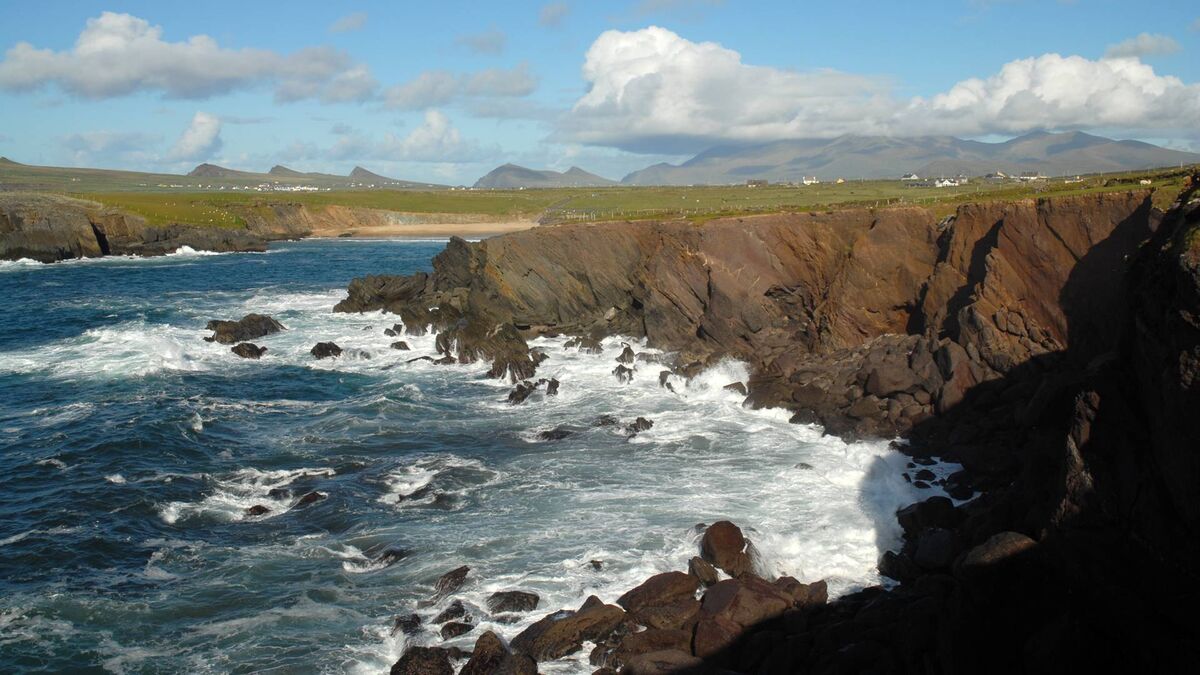
I never tire of this environment that I criss-crossed 30 years ago and more. Offshore, the silhouette of the sleeping man seems to rest forever. In the background, these three ridge lines — "The Three Sisters" — stand like a natural rampart against the ocean. I like to venture on these small roads that sometimes lead nowhere.
Unexpected moments then manifest themselves by chance. Surprises are sometimes promising, to those who know how to observe; encounters are there for those who know how to provoke them. We are in a "Gaeltacht", a preserved area where Gaelic is mainly spoken. These areas fiercely resist the domination of the English language. I then listen to savour, if not understand, this language which is more than 2,500 years old.
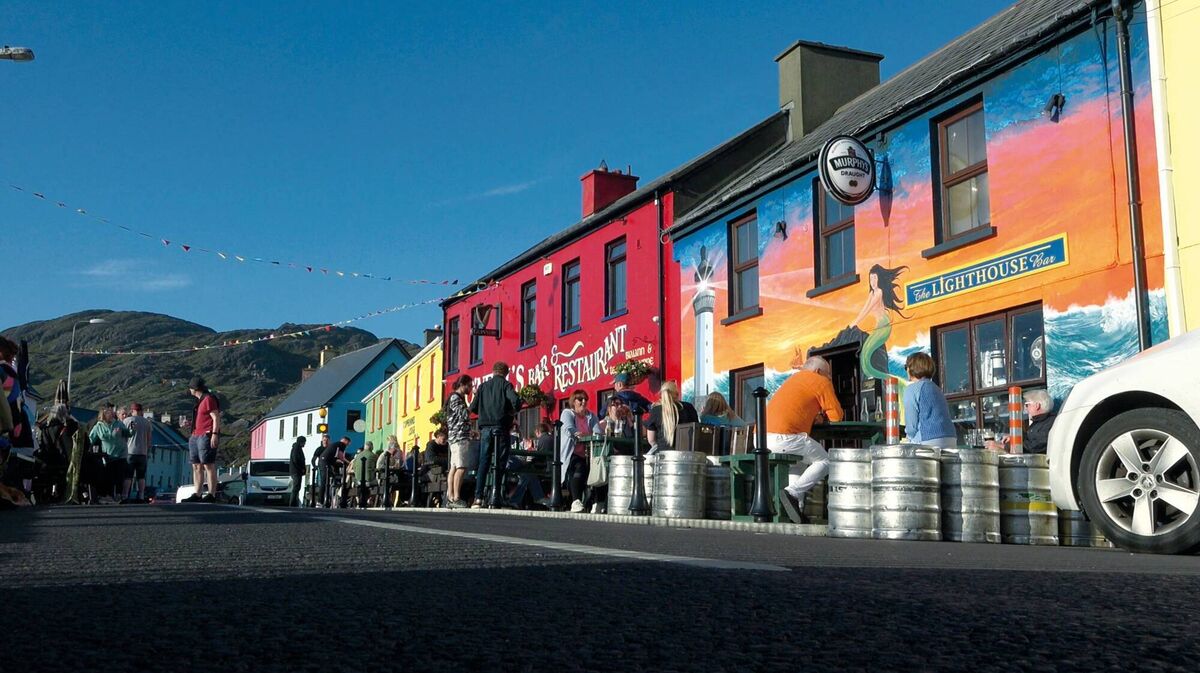
A few strong pockets of native Irish speakers still exist. For instance, the Aran Islands, off the Galway coast. For my film, I chose the smallest of the islands, Insh Oirr, to capture this living language. Eilis, a French teacher, welcomed me with a few students, offering me insights into people living with both Gaelic and English as part of their daily lives. Here, the ferries run at full capacity, disembarking thousands of visitors per year. The locals are fluent in both languages. They speak Irish among themselves; they speak English with visitors.
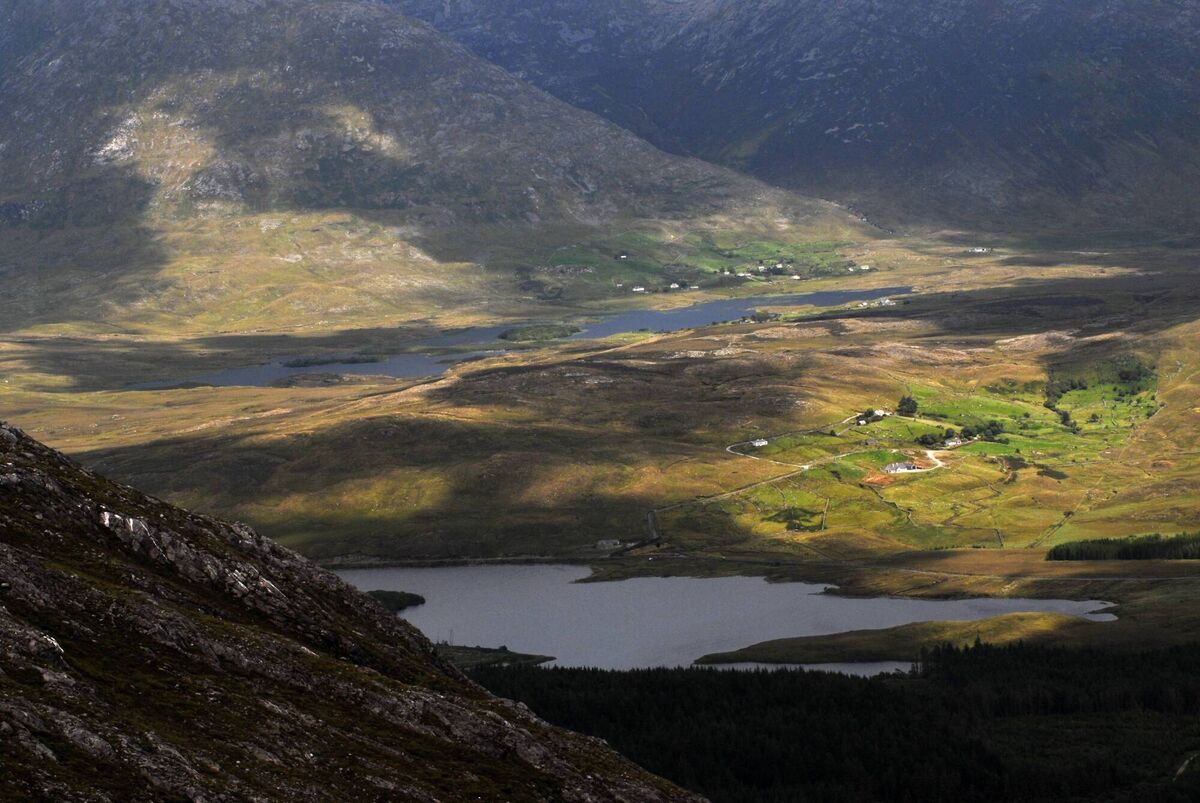
How many poets and writers have studied these Irish landscapes, whose rugged coast and sometimes harsh climate are often so critical elements to their stories? After two days, I leave Inish Oirr — a little earlier than I would have liked to. No doubt, I will have to come back.
The ferry slowly pulls away from the quay, bound for Brittany and home. One last look; a question comes to mind: would I be able to put my bags down for months, for a few years perhaps, without being tempted back by the call of the coast?
Jean-Luc Diquélou, originally from Finistère, Brittany, France.
1979 to 1982: adventure trip by bike across about 20 countries in Europe.
In 1983, he made his first film, a work of memory on his native village "Ste- Marine". It depicts the pre-war life (from 1900 to 1940) of the small Bigouden port. This was followed by "Le Pays de Galles", "L'Ecosse" (awarded in Brussels, Blois, St- Etienne , Le Guilvinec), "Le Pays Bigouden", three films on "L'Irlande" 1989, 1996 and 2007, "London", "Les Pyrénées" and finally "La Bretagne par le Sentier des Douaniers".
With "Les Pyrénées, de l'Atlantique à la Méditerranée", Jean-Luc immerses himself in a sumptuous, grandiose universe. He discovers another endearing human world.
With his film "Bretagne par le sentier des Douaniers", it is a return to his origins. Three years of scouting, observation, meetings and filming will bring him into contact with heritage, history, culture and people. Through six months of walking from Mont St-Michel to St-Nazaire, the Breton has in a way rediscovered his homeland.
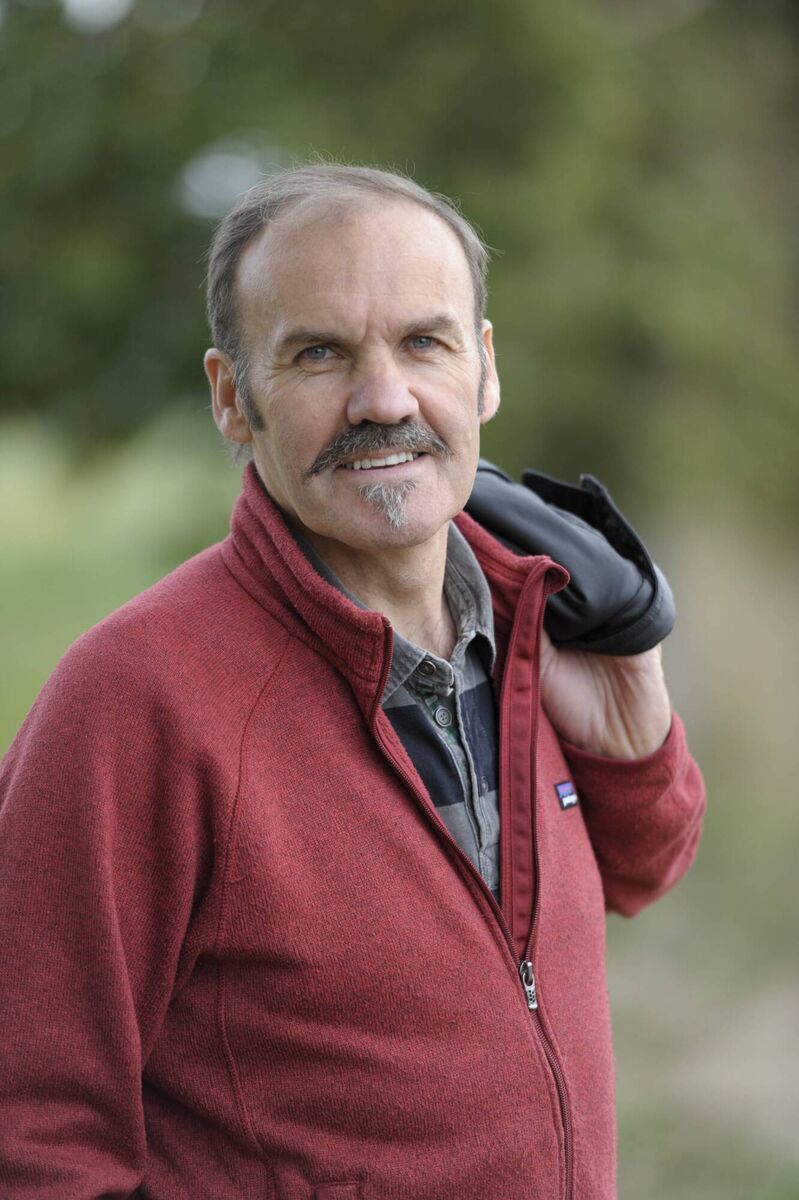
Beyond his job as a director, he is also an event organiser.
In 1998, he created in Chartres de Bretagne the Travel and Adventure Film Festival "Aux 4 Coins du Monde" which will last until 2015. At the same time, he launched a documentary film "Le Cercle des Voyageurs" on the Brittany and Pays de la Loire region in cultural venues.
In 2010, he created the Hiking fair "les Randofolies", first in Saint-Erblon, then at the Parc Expo in Rennes.
